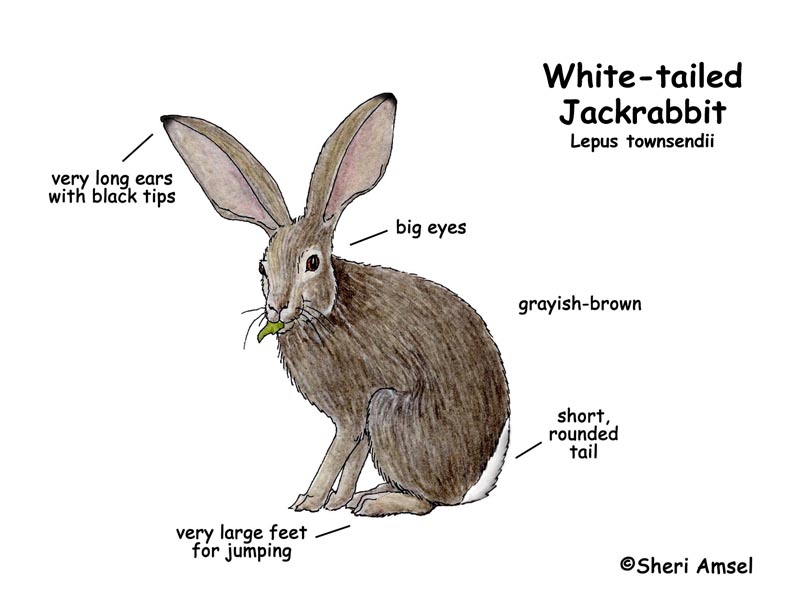

They are found in mid to western Canada and the U.S. south to central California and Kansas.
They are light gray, lighter below. They get lighter in color in the winter. Their tail is all light colored. They have long ears with darker tips. They have large back feet for leaping. They can grow to be big -- weighing up to 9 pounds (4kg).
They are active at night (nocturnal) and live alone (expect during mating season). A very fast animal, they can leap along at more than 30 mph (48 km/h).
They eat plants - grass, and shrubs.
They are eaten by hawks, coyotes, foxes, bobcats, badgers and weasels.
Females are pregnant (gestation) for about 6 weeks and have 5 or more young in a small hollow right on the ground, often lining it with their own fur. Young are more mature at birth than cottontail rabbits with body fur and eyes open. They are feeding on plants within a couple of weeks and completely on their own in little more than a month. In warmer climates females may have many litters in one year, though fewer in harsher climates.
They can live 6-8 years in the wild, but usually much shorter. They are listed as Lower Risk - least concern.
Kingdom: Animalia
Phylum: Chordata
Subphylum: Vertebrata
Class: Mammalia
Order: Lagomorpha
Family: Leporidae
Genus: Lepus
Species: Lepus townsendii
When you research information you must cite the reference. Citing for websites is different from citing from books, magazines and periodicals. The style of citing shown here is from the MLA Style Citations (Modern Language Association).
When citing a WEBSITE the general format is as follows.
Author Last Name, First Name(s). "Title: Subtitle of Part of Web Page, if appropriate." Title: Subtitle: Section of Page if appropriate. Sponsoring/Publishing Agency, If Given. Additional significant descriptive information. Date of Electronic Publication or other Date, such as Last Updated. Day Month Year of access < URL >.
Amsel, Sheri. "Jackrabbit (White-tailed)" Exploring Nature Educational Resource ©2005-2024. December 14, 2024
< http://www.exploringnature.org/db/view/475 >

